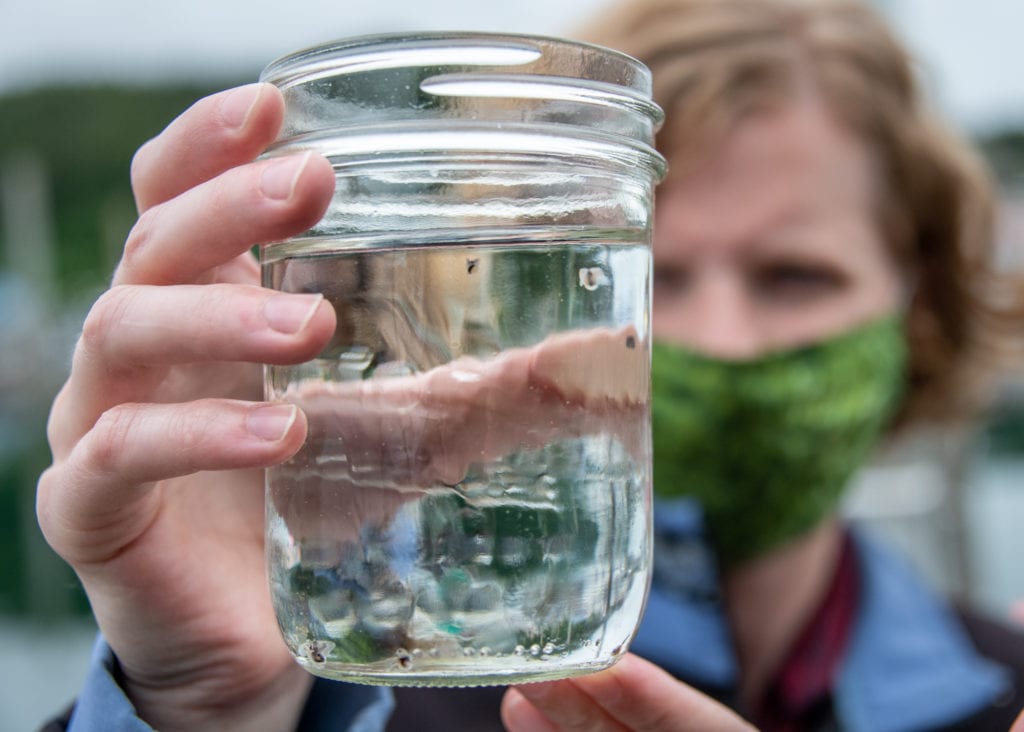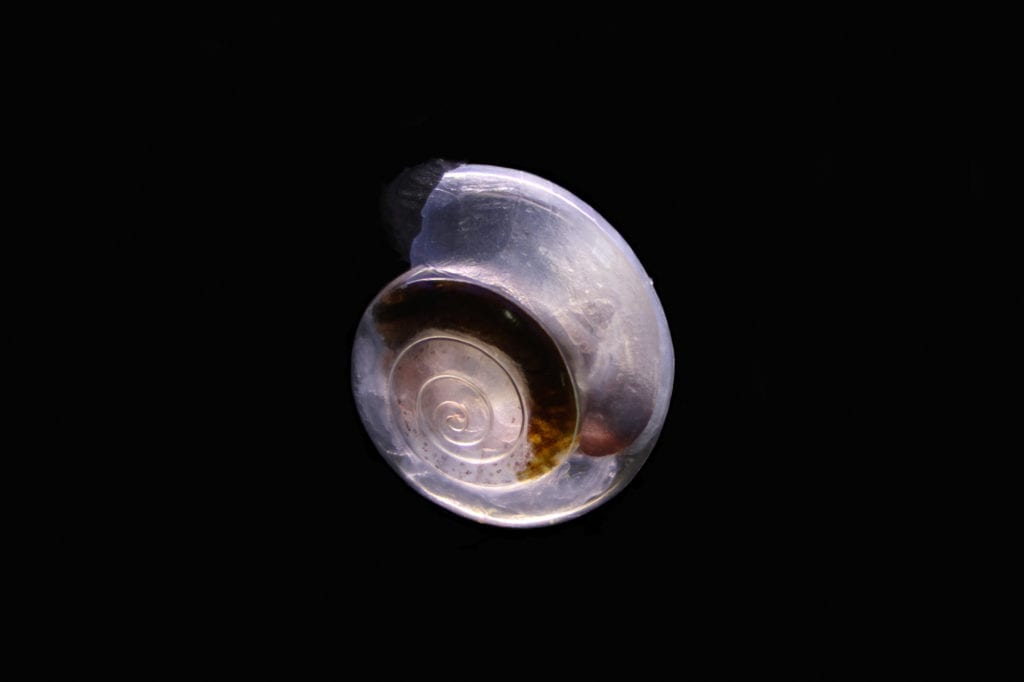
For the past two weeks, mysterious ripples have appeared among the fishing boats of Cordova Harbor.
“About 10 minutes ago, I looked outside and thought, ‘Oh, it’s raining,’” Caitlin McKinstry said. “I saw the raindrops hitting the surface of the harbor… But then I went outside for a second, and it’s not raining at all.”
McKinstry, who studies zooplankton for Prince William Sound Science Center, wasn’t the only one to notice the odd disturbances around the harbor. Her research helped her identify the source of the ripples: “sea butterflies,” a type of plankton common around Prince William Sound. However, sea butterflies are rarely this visible close to shore.
“They’re always around,” McKinstry said. “But I have never seen them in the harbor in this number at the surface.”
These “butterflies” are, in fact, snails that swim through the water by flapping their feet like a pair of wings. Delicately translucent and rarely more than 4 millimeters long, sea butterflies are an important food source for pink and chum salmon. McKinstry has spotted many juvenile herring in the harbor feeding on sea butterflies and other “pteropods” — wing-footed sea slugs and sea snails. Though Cordova Harbor’s sea butterflies appear little more than white specks, they’re unusually large for their species, McKinstry says.
In other regions, sea butterflies have warned researchers of rising ocean acidity. The snails’ fragile shells, made of calcium carbonate, are quickly dissolved when water pH falls. In this way, these butterfly-snails can serve as canaries in the coalmine, McKinstry said.

It remains undetermined why Cordova Harbor has become a center for such visible sea butterfly activity. A zooplankton survey conducted in the middle of the sound in early June showed a high concentration of pteropods. A multi-day oceanographic cruise that commenced Tuesday, June 16 will hopefully shed more light on the phenomenon, McKinstry said. The cruise is part of Gulf Watch Alaska, an ecosystem monitoring program in which PWSSC participates. PWSSC has been collecting relevant data since 2010, and will have a strong data set with which to determine whether recent sea butterfly activity is really as unusual as it seems.
In the meantime, fishermen and families have been visiting the harbor to observe or to catch the tiny creatures. Unusual as they appear, sea butterflies are benign and their presence should be no cause for alarm, McKinstry said.
“They’re interesting little critters,” McKinstry said. “They don’t have any toxins. They’re a normal part of the food web in the sound.”





